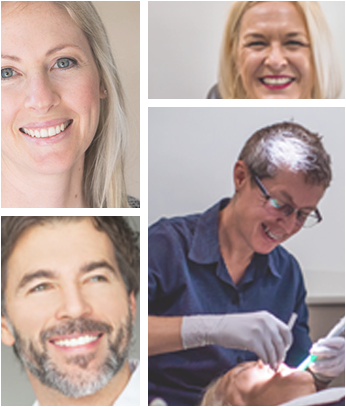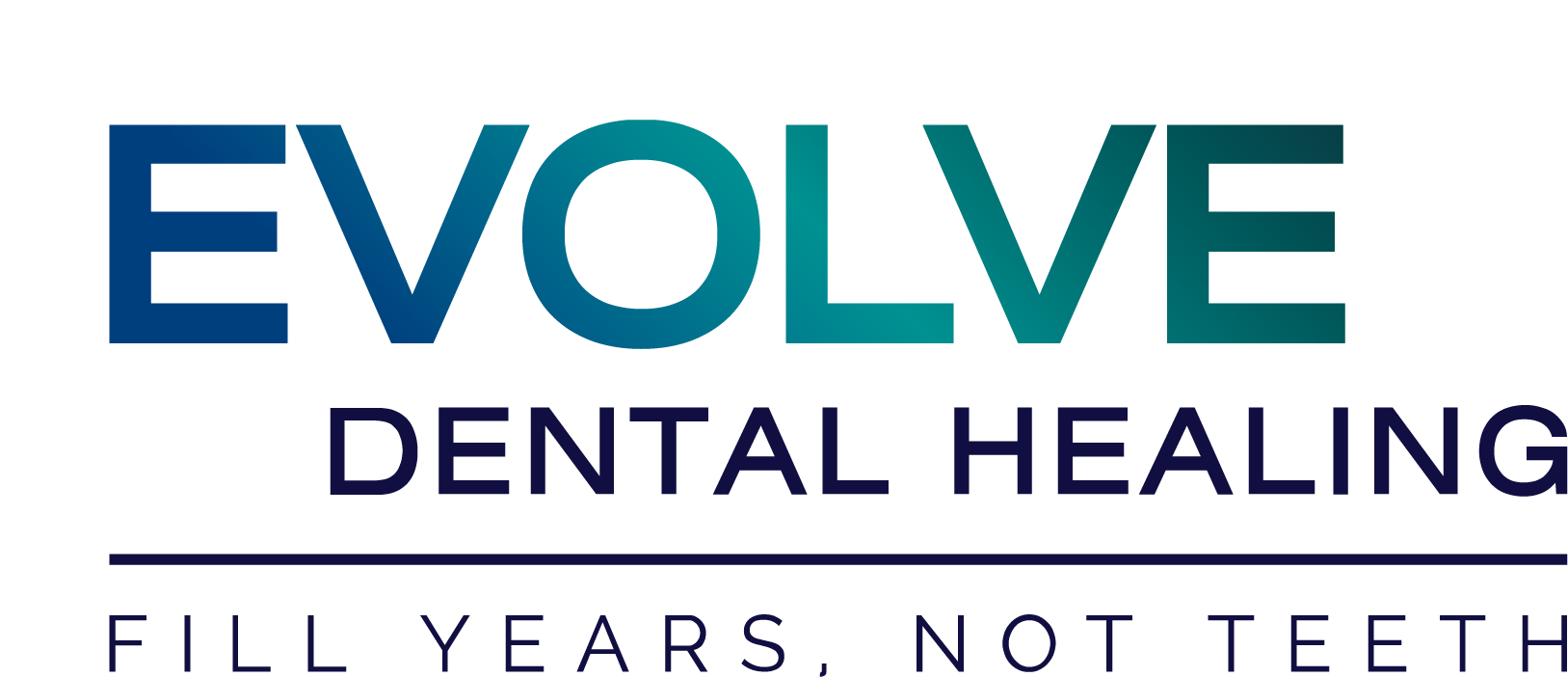Is Fluoride Safe? Fluoride pros and cons

Is Fluoride Safe
I get asked everyday by my patients ‘what are your thoughts on fluoride?’, ‘does fluoride work?’ and ‘is fluoride safe?’.
Well in answer to those questions we will need to look at what type of fluoride we are talking about, how it is applied and are there other factors involved when it comes to reducing the risk for or preventing tooth decay.
What is fluoride?
There are actually many different types of compounds known as fluoride. For example, calcium fluoride is found in well water and soil all over the world in varying degrees. Seawater also contains this compound.
Sodium fluoride, on the other hand, is the compound that was originally added to drinking water.
Unlike calcium fluoride, sodium fluoride is greatly absorbed by your body and is not naturally-occurring (read: it’s synthetic). Before it became known as the miracle of modern dentistry, sodium fluoride was just good old industrial toxic waste.
The third kind of fluoride is most concerning to me, as it makes up 90 percent of today’s fluoridated water supply is called hydrofluorosilicic acid (HFS or FSA) and is also industrial waste.
Why is it so bad? HFS contains arsenic (a known carcinogen) and leeches lead (also a carcinogen) as it travels through pipes more than other types of fluoride.
Fluoride in Toothpaste
Sodium fluoride, found in toothpaste, can have beneficial effects when used topically – directly on the teeth. Used in prescription-strength toothpastes, it can support remineralisation of teeth and make it possible to heal early cavities. At least, that was the profession’s thinking for the past several decades.
But in order to get the fluoride into the teeth, prescription strength toothpastes are formulated to be acidic. The acid breaks down the tooth structure so that the amount of fluoride that enters your tooth is greater.
I’m not a fan of any product that essentially breaks down enamel, but as I mentioned, these topical applications can be beneficial. Yet, there is a better more natural and holistic way of remineralising teeth, which I’ll talk about later.
Fluoride in The Water
Unfortunately, the fluoride that is in the water isn’t really helpful for preventing cavities and swallowing this chemical causes much more harm than good, as it travels through your bloodstream and to all parts of your body.
For example, fluoride can pass into the brain or the placenta to a foetus when ingested. And since you only get rid of about 50 percent of the fluoride you consume (through urination), the other 50 percent sticks around via bioaccumulation anywhere your body stores calcium, like the inside of your teeth, bones, and cartilage. Fluoride can also build up in the pineal gland that regulates sleep.
In animals, fluoride accumulation in the brain alters neurotransmitter levels including adrenalin, histamine, serotonin, glutamate, norepinephrine, acetylcholine, and dopamine. This happens to animals when the amount of fluoride in its blood is similar to that of a human who is ingesting it regularly.
Considering the above facts, you have to question why we’re still adding this chemical to water, especially because there’s no concrete proof that ingested fluoride even reduces the cavity rate.
How did this stuff get in our water?
History of Fluoride Use
Fluoride for the teeth was an unexpected discovery made by Frederick McKay, a dentist who spent time in Colorado. In 1901, he stumbled across the fact that the cases of “Colorado Brown Stain” in the many children in Colorado Springs seemed to relate to the strength of the children’s’ teeth, even discoloured as they were.
McKay found that fluoride supports the process of remineralisation but could also lead to mottled teeth, now known as dental fluorosis. Colorado Springs had a great deal of naturally occurring fluoride in the ground and well water that led to this conclusion. (Note here that naturally occurring fluoride is not the same as the additive that ends up in our current water supplies!)
Then, in 1945, studies in various US cities were conducted between fluoridated and unfluoridated communities. Apparently, fluoride reduced dental cavities by 50-70 percent over the course of 15 years, leading to an official recommendation in 1962 to add fluoride to public drinking water.
However, none of that data referenced in those studies is actually available. In fact, it’s unclear whether the studies were ever completed or well-documented.
The evidence we do have shows us that cavity formation has actually declined equally between communities with and without fluoride in their water, which leads me to believe that the reduction in decay had very little to do with the water.
Even when the use of fluoride to reduce cavities has been studied, the quality of research leaves much to be desired and typically shows that if cavity rates decrease, it’s by an incredibly small margin.
Yes, cavity rates have declined since the introduction of fluoride in the water supply. However, rates have also declined at nearly identical rates in countries with no public water fluoridation whatsoever.
The Dangers of Fluoride
According to a review from the University of California in San Diego, industrial fluoride is completely soluble—unlike the calcium fluoride that occurs in nature. The review also supports my belief that, not only is ingesting this chemical unhelpful for cavities, it’s also dangerous as it accumulates in the body.
The review states, “Industrial fluoride ingested from treated water enters saliva at levels too low to affect dental caries [decay]. Blood levels during lifelong consumption can harm heart, bone, brain, and even developing teeth enamel.”
It’s nearly impossible to track an individual’s fluoride consumption because it comes from so many sources.
In addition to tap water, fluoride is found in foods, like dill pickles, carbonated drinks, bottled fruit juice, canned tomato products, spinach and dental products including toothpaste, mouthwash, gels, varnish, and supplements, pesticides, teflon pans, medications and anaesthetics.
Fluoridated water is used to make packaged foods, bottled drinks, and even to water plants!
Fluoride is practically everywhere! Here are some of the ways it can cause harm.
1. Fluorosis
Fluorosis is, perhaps, the least shocking but also the most ironic danger. Dental fluorosis is the condition of mottled teeth (appearing as small, white or brown spots on the teeth) that was first defined by Dr. McKay. Dental fluorosis rates have been rising in the last 30-40 years, likely due to the increase in fluoride sources.
Fluorosis is the only widely acknowledged issue from fluoride exposure. It is thought to impact less than a quarter of people worldwide and typically doesn’t stay on permanent adult teeth, but many adults find that their permanent teeth also show signs of fluorosis.
In countries with very high levels of calcium fluoride in the water, people can develop a severe form of this condition called crippling skeletal fluorosis, which causes bone to become rigid and brittle.
I consider even mild dental fluorosis to be a major problem because these discolourations are not just a cosmetic issue. They are symbolic of excessive fluoride ingestion. Plus, areas of the teeth affected by fluorosis are more prone to developing cavities.
2. Cancer
The research in this area is inconsistent; however, it appears that fluoride ingestion can impact cancer incidence and/or death from cancer.
A type of bone cancer called osteosarcoma may happen more often in fluoridated communities, but there are conflicting results.
Whilst there is even a hint of a link I encourage making a decision based on the lesser of two evils. Is the hope of preventing one or two cavities enough to risk a higher chance of cancer?
3. Brain/Central Nervous System Damage
Concerns about the impact of fluoride on the brain began in the 1990s in the infamous Mullenix study, which found that both prenatal and postnatal exposure to the chemical led to deficits in cognition and/or attention. Various human studies, including some conducted by Harvard scientists, suggest that significant fluoridated water exposure is associated with up to a 7-point drop in IQ scores.
Because it might cause you to absorb more aluminium—which likely plays a role in brain degradation—fluoride could be one possible reason instances of Alzheimer’s disease continue to increase.
We also know that fluoride may affect circadian rhythms and sleep, as well as a number of neurotransmitter levels. These impacts have not been studied but could have incredibly far-reaching effects for not only brain health, but overall health.
4. Various Disease Risks
Fluoride might increase risk for a number of diseases and health conditions in addition to those listed above. Those with studied correlations include:
- Bone fractures
- Diabetes
- Early puberty
- Hypothyroidism (under-active thyroid)
Is Fluoride in Toothpaste Bad?
Fluoride in over-the-counter toothpaste is pretty useless, primarily because there’s not enough of it in the toothpaste to help your teeth remineralise.
But there is enough of the chemical in toothpastes to be dangerous if swallowed regularly, which is why I recommend using a fluoride-free toothpaste with children.
In the past, I’ve recommended prescription-strength fluoride toothpaste of 5000 ppm to certain patients. However, now that a better options are available, I no longer see any reason to recommend fluoride use.
Alternatives to Fluoride-Containing Toothpaste (And When to Use Them)
Many people simply don’t need a toothpaste that remineralises cavities. You can do much more to prevent cavities naturally simply by adjusting your diet and following better dental hygiene, like tongue scraping, and rinsing your mouth after eating acidic or sugary foods.
For patients who do need extra support remineralising, I now recommend toothpaste containing nano-hydroxyapatite particles. It is much more effective in healing decalcification on the teeth, and with none of the associated dangers.
The particles in nano-hydroxyapatite (HA) toothpastes are actually tiny, nano-sized bone fragments that your teeth can incorporate to strengthen enamel and remineralise the surface.
They outperform fluoride when compared side by side, and the best part is that they’re completely non-toxic. Swallowing this toothpaste is essentially like drinking some extra bone broth—and far from requiring a call to Poison Control as recommended of your kid swallows the contents of a tube of fluoridated toothpaste.
I recommend this nano-HA toothpaste to:
- kids with braces who have difficulty keeping plaque off their teeth.
- People with a carbohydrate- and sugar-rich diet to try to stop them developing so many cavities.
- Patients on radiation therapy for cancer treatment. When the mouth, head, and neck are exposed to radiation, saliva glands will atrophy (shrink) and stop producing moisture. Without saliva, the decay rate goes up drastically.
- Elderly people with dry mouth, receding gums, and root decay. These conditions often occur when older patients are exposed to certain medications that carry these side effects. These conditions can then be made worse by reduced dental hygiene.
- Patients with ultra-sensitive teeth. For some people, just walking outside in the winter or being in a cold air conditioned room can cause severe tooth pain. The roots and/or neck of the teeth are exposed in these patients, and their teeth desperately need additional calcification. In cases like these, a prescription-strength fluoride toothpaste can help to decrease the pain caused by external stimuli.
- Patients with a habit of mouth-breathing. Surprisingly, people who breathe through their mouths instead of their nose have a higher rate of tooth decay. In addition to using nano-hydroxyapatite toothpaste, this can be treated naturally by mouth taping at night.
- People with chronic allergies. When your nose is stuffed up because of chronic allergies, your body may be forced to breathe through the mouth, increasing your risk for cavities.
Additionally, there are several natural toothpastes that I recommend for my average patient without cavities.
Brushing and Flossing Prevent Tooth Decay – Right?
Brushing and flossing aren’t the best, or even most effective, methods of keeping teeth healthy. Treating dry mouth, the correct diet, followed by brushing and flossing, are the most important elements to keeping teeth cavity-free and naturally reversing any smaller, existing cavities.
Genetics even play a part, which is why some people will simply be more prone to tooth decay than others, making it all the more important to follow the best practices overall.
Brushing serves to restructure and remove the bacteria in your oral microbiome, and you don’t need fluoride to do that. The actual toothpaste you use, in my experience, is a very small part of the equation.
What is Fluoride Varnish and Who Should Use It?
Fluoride varnish is the gel-like treatment used by your dentists or dental hygienist after your teeth have been cleaned. The problem with varnishes is that they have extremely high levels of fluoride which can then be absorbed into your bloodstream and distributed throughout the body.
My suggestion? When you go to the dentist, tell them to skip this treatment altogether.
I Need Fluoride to Prevent Tooth Decay?
Fluoride is not the key to preventing or reversing tooth decay.
Cavities and oral disease occur because of a lack of proper hygiene and diet as well as mouth breathing and some genetic components.
People that primarily eat meats, vegetables, and fruits, and drink plenty of water instead of fruit juice and sodas, rarely have cavities. They have very low bacterial activity because they’re eating foods that heal cavities naturally and prevent tooth decay. Which also means that they’re avoiding the foods that directly cause tooth decay.)
How to Get Fluoride Out of Your Life
It’s virtually impossible to avoid all fluoride, but you can go a long way in reducing your exposure or to detox the amount that you’ve already bioaccumulated.
First, try focusing on a more alkaline diet—the more acidic your urine, the less fluoride you’re able to get rid of.
You might also benefit from drinking tamarind tea, increasing the amount of high-selenium foods you eat, and exercising regularly. All of these activities will cause your body to excrete more fluoride.
Filtering Your Water—Filters including reverse osmosis, deionizers, and activated alumina will reduce the amount of fluoride in your tap water. Be aware of exactly the type of filter you’re using: activated carbon filters or other common types likely don’t get rid of this particular toxin.
Drinking Distilled Water—There are important minerals in water that are removed by distillation, but you can drink distilled water to avoid fluoride. If you’re getting minerals through vegetables, bottled mineral water, or supplements, distilled water is a great option. I generally recommend water with a pH of 7 or higher for cavity prevention.
Using Bottled Water—Most brands don’t contain any fluoride but be sure to check the label.
Eliminating Processed Foods—Many processed, and packaged foods have more fluoride than you might expect because they’re made using water that’s been fluoridated. Getting rid of as many processed foods as you can has the double whammy of both reducing fluoride consumption and supporting a healthier oral environment.
Buying Organic—Because of the fluoride-based pesticides used on many non-organic vegetables, organic options will often have less of the chemical.
A Holistic Dentist’s Thoughts on Fluoride
I know it might be surprising for a dentist to say people don’t need fluoride, I stand by my beliefs here.
The development of nano-hydroxyapatite toothpaste has completely eliminated the need for even prescription-strength fluoride toothpastes and varnishes.
This toxin was introduced into public water supplies throughout the second half of the 20th century and is currently present in the public water here in Brisbane.
However, there is little to no research supporting its claimed ability to prevent cavities when ingested.
Additionally, consuming fluoride via tap water and other sources leads to many dangers, including fluorosis, cancer risk, brain/central nervous system damage, and various disease risks.
Ultimately, we’ve missed the real discussion of the root cause of cavities when we put the focus on using fluoride. To truly prevent and reverse cavities, the best practices you can follow are:
- Prevent dry mouth. Try mouth taping at night to help you stop mouth breathing, and have a conversation with your doctor about any medications that could be causing dry mouth.
- Eat a diet rich in plants, grass-fed proteins, , nuts, seeds, and healthy fats. When you “cheat” with something high in acid, refined carbohydrates, or sugar, spend only a brief time consuming it, rinse your mouth, then brush 30-45 minutes later to neutralise the impact of it to your teeth.
- Incorporate good dental hygiene, such as brushing teeth the right way, tongue scraping, flossing, and getting regular cleanings at the dentist.
- Remember that genetics and epigenetics (the changeable “on-off switch” of your DNA) play a part in dental health. Research shows that epigenetics can be positively influenced by healthy dietary and lifestyle habits—a benefit you can experience not only for yourself, but that you can even pass to your offspring.
That’s what we’re all about here at Evolve Dental Healing not only having the right conversations about dental and oral health, but sometimes changing the conversation.
As a holistic dental practice our goal is to help you fill years not teeth and live a long and healthy life.
Contact us now to have a new conversation about dental care 07 3720 1811
Thank you Ask The Dentist as a source for this article
-
Dr. Rachel Hall
Rachel is the founder and principal dentist at Evolve Dental Healing with over 30 years experience, practising holistically since 2001. Not your typical dentist, Rachel is a passionate opinion leader, challenging convention to empower people to make better dental and health choices, helping thousands to have healthy natural smiles. A respected writer and presenter on holistic dentistry, health and wellness it is Rachel’s mission to revolutionise the way people look at their dental health.
Talk to us for more details and information
CONTACT US
67 Kenmore Road
Kenmore Queensland 4069
Phone: 07 3720 1811
Fax: 07 3720 1899
Email: info@evolvedental.com.au
OPENING HOURS
Monday – Friday: 7:30am – 5:30pm
References and Citations Mercury & Amalgam Fillings




